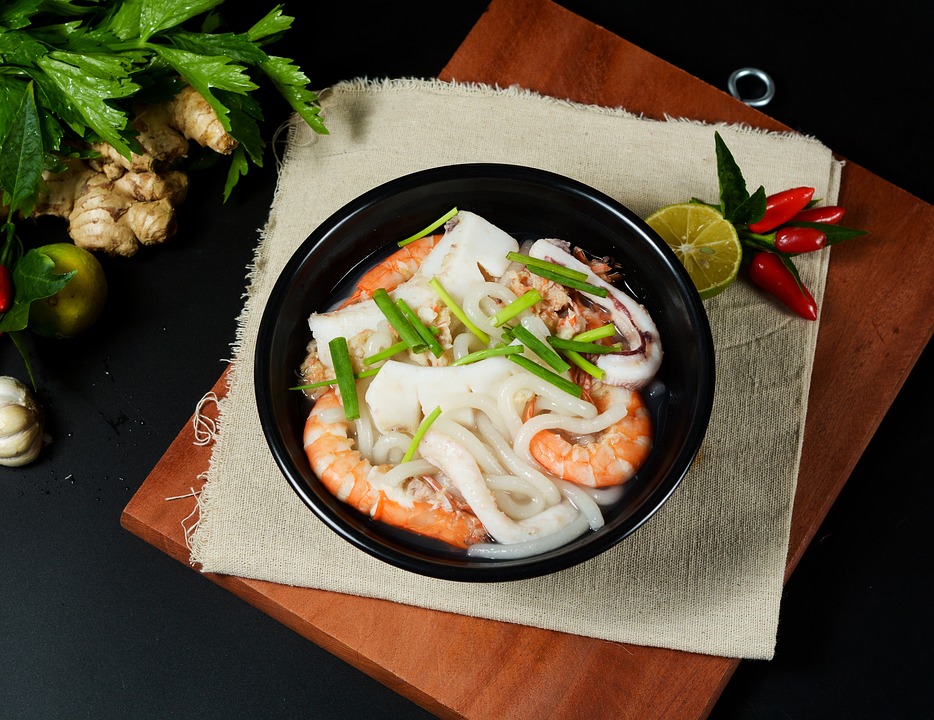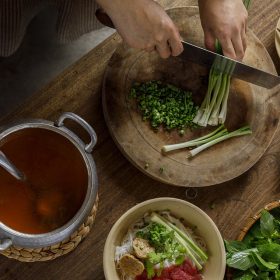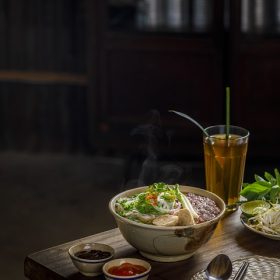Introduction
A colonoscopy is a medical procedure that allows doctors to examine the colon and rectum for any abnormalities or signs of diseases such as colorectal cancer. It involves the insertion of a flexible tube with a camera into the rectum and colon. During this procedure, patients are required to follow a specific diet to ensure a clear view of the colon. Once the colonoscopy is completed, patients often wonder what they can eat to ease their hunger and provide nourishment. One popular question that arises is whether it is safe to eat pho, a traditional Vietnamese soup dish, after a colonoscopy.
Understanding Pho
Pho is a Vietnamese soup dish consisting of broth, rice noodles, various herbs, and meat, typically beef or chicken. It is a flavorful and nutritious meal often enjoyed by many due to its rich taste and health benefits. The broth in pho is made by simmering bones, meat, and spices for an extended period, resulting in a flavorful and aromatic base.
Considerations After a Colonoscopy
After a colonoscopy, it is essential to give your digestive system some time to recover. The procedure can irritate the colon, and the effects of the anesthesia can also impact digestion. Therefore, it is recommended to start with a light and easily digestible diet, gradually reintroducing regular foods over time. It is crucial to consult your doctor or healthcare provider for specific post-colonoscopy dietary instructions.
Eating Pho After a Colonoscopy
Pho can be a suitable choice for a post-colonoscopy meal if certain considerations are taken into account. Here are some things to keep in mind:
1. Broth Consistency
Ensure that the pho broth is strained properly to remove any solid ingredients such as bones, meat, and spices. The broth should have a clear and thin consistency, making it easier to digest without putting extra strain on your healing digestive system.
2. Noodle Softness
Opt for softer rice noodles in your pho. These noodles are easier to chew and digest compared to firmer ones. Soft noodles will not cause discomfort or put additional strain on your healing colon.
3. Meat Selection
Choose lean and tender meat options like thinly sliced beef or chicken breast instead of tougher cuts. Tender meat is easier to chew and digest, reducing the risk of any discomfort or digestive issues after the colonoscopy.
4. Avoid Spicy Condiments
While pho traditionally includes various condiments like chili peppers and hot sauces, it is best to avoid them immediately after a colonoscopy. Spicy foods can irritate the colon and cause discomfort or digestive issues. Stick to milder flavors and seasonings.
5. Portion Control
Control your portion size when consuming pho after a colonoscopy. Start with a small bowl and see how your body reacts. If you experience any discomfort or digestive issues, it is advisable to stop eating and consult your healthcare provider.
Conclusion
Pho can be a suitable choice for a post-colonoscopy meal if certain considerations are taken into account. Opt for a clear and thin broth, softer rice noodles, lean and tender meats, and avoid spicy condiments. It is crucial to listen to your body and consult your healthcare provider for personalized advice regarding your diet after a colonoscopy. Enjoy your pho while ensuring your digestive system recovers properly!

Cuong Nguyen is a talented writer and experienced waitress at Vietnampalace.net, a renowned Vietnamese restaurant that offers an extensive menu of authentic Vietnamese cuisine. With a background in the competition of Vietnamese cuisine, Cuong brings a wealth of knowledge and expertise to the dining experience. From delicious pho dishes to fresh spring rolls, Cuong ensures that every meal is made with the freshest ingredients and authentic flavors.With exceptional service and a friendly atmosphere, Cuong takes pride in providing a memorable dining experience for every customer.
Whether you’re a vegetarian looking for options or a meat lover craving the flavors of traditional Vietnamese dishes, Cuong guarantees a delightful culinary adventure. So, visit Vietnampalace.net and let Cuong guide you through the tantalizing world of Vietnamese cuisine.



